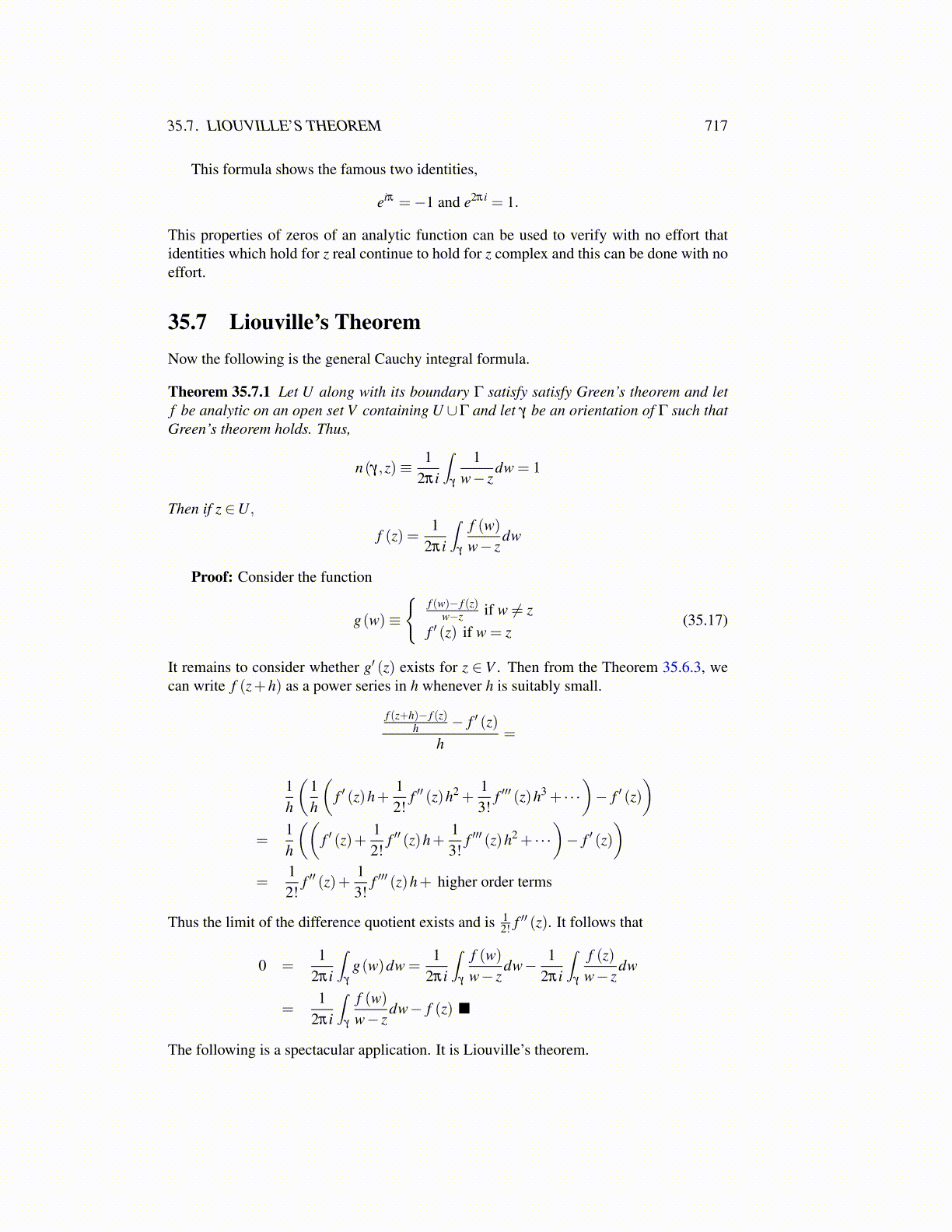
35.7. LIOUVILLE’S THEOREM 717
This formula shows the famous two identities,
eiπ =−1 and e2πi = 1.
This properties of zeros of an analytic function can be used to verify with no effort thatidentities which hold for z real continue to hold for z complex and this can be done with noeffort.
35.7 Liouville’s TheoremNow the following is the general Cauchy integral formula.
Theorem 35.7.1 Let U along with its boundary Γ satisfy satisfy Green’s theorem and letf be analytic on an open set V containing U ∪Γ and let γ be an orientation of Γ such thatGreen’s theorem holds. Thus,
n(γ,z)≡ 12πi
∫γ
1w− z
dw = 1
Then if z ∈U,
f (z) =1
2πi
∫γ
f (w)w− z
dw
Proof: Consider the function
g(w)≡
{f (w)− f (z)
w−z if w ̸= zf ′ (z) if w = z
(35.17)
It remains to consider whether g′ (z) exists for z ∈ V . Then from the Theorem 35.6.3, wecan write f (z+h) as a power series in h whenever h is suitably small.
f (z+h)− f (z)h − f ′ (z)
h=
1h
(1h
(f ′ (z)h+
12!
f ′′ (z)h2 +13!
f ′′′ (z)h3 + · · ·)− f ′ (z)
)=
1h
((f ′ (z)+
12!
f ′′ (z)h+13!
f ′′′ (z)h2 + · · ·)− f ′ (z)
)=
12!
f ′′ (z)+13!
f ′′′ (z)h+ higher order terms
Thus the limit of the difference quotient exists and is 12! f ′′ (z). It follows that
0 =1
2πi
∫γ
g(w)dw =1
2πi
∫γ
f (w)w− z
dw− 12πi
∫γ
f (z)w− z
dw
=1
2πi
∫γ
f (w)w− z
dw− f (z) ■
The following is a spectacular application. It is Liouville’s theorem.